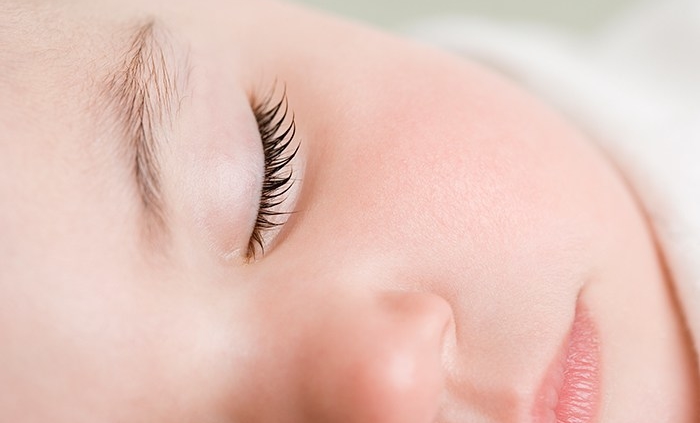Over our various blog articles, we have discussed how cold sores affect parts of the body other than the lips and other cold sore facts. While the HSV-1 and HSV-2 virus strains are the most common, there’s also the Herpes Zoster or HZV, Cytomegalovirus or CMV, and others.
How Can Cold Sore Virus Affect My Eyes?
HSV-1 is the most common strain to affect the eyes, which is also the strain that causes cold sores. Herpes Zoster, the same strain that causes chickenpox in children and shingles for adults, can also affect the eyes.
The cornea of the eye is the most susceptible part of the eye to infection. When the cornea of the eye becomes infected or inflamed, it’s referred to as keratitis. HSV-1 and HZV can also affect the skin of the eyelids, iris, and the retina.
1. HSV-1: The Most Common Cause of Herpes Eye Infections
HSV-1 is the leading cause of ocular herpes, often due to reactivation of a latent virus in the trigeminal nerve.
Types of Eye Infections Caused:
-
Herpes Simplex Keratitis (HSK): Infection of the cornea
-
Symptoms: Eye pain, redness, blurred vision, photophobia, tearing
-
Types:
-
Conjunctivitis: Redness and irritation in the eye
-
Iridocyclitis: Inflammation of the iris and ciliary body
-
Retinitis (rare): Inflammation of the retina, more severe and vision-threatening
2. HSV-2: Rare in the Eye, but More Serious When It Happens
HSV-2 is less likely to affect the eye in adults but can do so in neonates infected during vaginal delivery.
Neonatal HSV-2 Ocular Infection:
-
May involve:
-
Often part of disseminated or CNS disease in newborns
-
Requires urgent antiviral treatment (e.g., IV acyclovir)
🧪 Diagnosis
-
Clinical exam using slit-lamp and fluorescein dye
-
PCR or viral culture (from conjunctival swabs or corneal scrapings)
-
Serologic testing if needed
💊 Treatment
-
Topical antivirals (e.g., trifluridine, ganciclovir gel) for epithelial keratitis
-
Oral antivirals (e.g., acyclovir, valacyclovir) for stromal or recurrent infections
-
Topical corticosteroids sometimes used with antiviral cover for stromal disease
-
Avoid steroids alone — they can worsen HSV eye infections
⚠️ Complications
If you’re experiencing eye symptoms and suspect HSV, it’s crucial to see an ophthalmologist immediately, as early treatment greatly reduces the risk of permanent damage.
Herpes Simplex Virus Type 1 (HSV-1) is the most common viral cause of eye infections, especially affecting the cornea and conjunctiva. Ocular HSV-1 can be recurrent and vision-threatening if not properly managed.
👁️ How HSV-1 Affects the Eyes
1. Herpes Simplex Keratitis (HSK)
This is the most common manifestation of HSV-1 in the eye.
Types of Keratitis:
| Type |
Description |
Key Signs |
| Epithelial Keratitis |
Active viral replication in superficial cornea |
Dendritic ulcers (branching lesions) seen with fluorescein dye |
| Stromal Keratitis |
Immune-mediated inflammation of deeper corneal layers |
Hazy cornea, decreased vision, potential for scarring |
| Endothelitis |
Inflammation of innermost corneal layer (endothelium) |
Corneal edema, blurred vision, keratic precipitates |
2. Herpes Simplex Conjunctivitis
3. Iridocyclitis (Anterior Uveitis)
-
Inflammation of iris and ciliary body
-
Pain, photophobia, blurred vision
-
Often occurs with keratitis
4. Herpetic Retinitis (rare)
-
A rare but severe posterior segment infection (e.g., Acute Retinal Necrosis)
-
Can lead to permanent blindness if untreated
🔁 Recurrence
-
HSV-1 can reactivate from latency in the trigeminal ganglion
-
Triggers: Stress, fever, UV light, trauma, immunosuppression
-
Each recurrence increases risk of corneal scarring and vision loss
🧪 Diagnosis
-
Slit-lamp exam with fluorescein staining (dendritic ulcers are classic)
-
PCR testing or viral culture from corneal scrapings
-
Confocal microscopy or serologic tests in atypical cases
💊 Treatment
| Condition |
Treatment |
| Epithelial keratitis |
Topical antivirals (e.g., trifluridine, ganciclovir gel), oral antivirals (e.g., acyclovir) |
| Stromal keratitis |
Oral antivirals + topical corticosteroids (only under ophthalmologist’s guidance) |
| Uveitis |
Oral antivirals + topical corticosteroids |
| Prophylaxis (recurrent disease) |
Daily oral acyclovir or valacyclovir may reduce recurrences |
⚠️ Complications
-
Corneal scarring
-
Vision impairment or blindness
-
Secondary bacterial infection
-
Glaucoma (from chronic inflammation or steroid use)
🩺 When to See a Doctor
Seek immediate ophthalmologic evaluation if you experience:
-
Sudden eye pain, redness, or light sensitivity
-
Blurred or decreased vision
-
Recurring eye irritation with a history of cold sores or HSV
Early diagnosis and proper antiviral treatment are key to preventing long-term visual damage.





